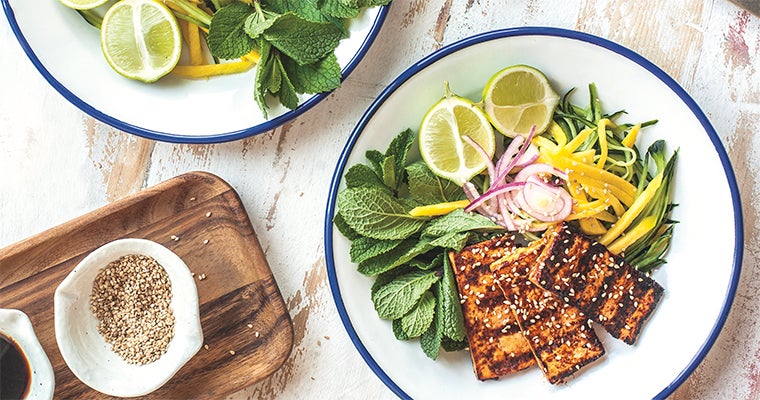Make it more than a trend with appetizing and approachable options.
Remember the 1980s original gangsters, Boca Burgers and Gardenburger? Thanks to 21st century food science, plant-based foods have come a long way, and they are here to stay.
Restaurant operators today are thinking far beyond the bun. With plant-based foods that look and taste like beef, poultry, seafood, eggs, milk, etc., the challenge is figuring out how to add them to the menu and build loyalty.
Gordon Food Service experts explained why it makes sense to offer plant-based options and ways you can market them.
Menu callouts matter
Veg-centric dining, meatless Mondays and mindful eating have changed the menu landscape. Even so, “vegan” or “vegetarian” callouts spook many mainstream diners. As with all parts of the menu, authenticity works, according to Vancouver-based Product Specialist Maria Dalziel.
“Vegetarians and vegans lead the charge with the plant-based segment, but plant-based foods also are a gateway into a healthier lifestyle for other diners,” she said. “They are looking for variety and ways to add more interesting meals to their diet.”
She suggests operators substitute a plant-based protein for tofu. Dishes using alt-proteins will catch on if they are appetizing and approachable.
“The same menu can have Impossible Burgers, plant milks and plant cheeses as well as standard meat options, and they can play off each other,” Dalziel said..
Health and social appeal
Success of plant-based menu items will depend on how they are described and how the waitstaff is trained to talk about them, explains Quebec City Culinary Specialist Paul-André Miron Piché.
“Operators can take risks and place one or two plant-based items on the menu … give people a taste and see their reactions,” he said. “Make it Instagrammable and cute so it looks appealing to the younger generation.”
Giving diners a choice is key, Dalziel points out. “We encourage operators to list their main dish and have all of the proteins and alternatives listed as add-ons. It’s not a matter of choosing a vegan dish or a meat-centric dish, it gives customers the option of choosing plant-based, and à la carte menus encourage higher total spending.”
When consumers feel good about choosing plant-based foods, restaurants can double down on their messaging about using environmentally friendly disposables or takeout packaging. The combination of plant-based food and thoughtful packaging enhances the whole operation.
Many of the restaurant industry’s top trends are directly or indirectly related to sustainability and plant-based products. Dalziel and Miron Piché agree that pairing the messaging is an opportunity.
“Plant-based foods and packaging sustainability go well together, and it shows character when a business offers both,” Miron Piché said.
Watch for limitations
Between veg-centric dining and plant-based possibilities, the audience is vast, but not unlimited. Despite all the trend predictions, Dalziel warns that some people could be turned away because plant-based foods are processed and often not low-calorie options.
“People can be pretty divisive even when you’re talking about beef – some people want only grass-fed, others want grain-fed,” she explained. “There are people who won’t mind lab-created or processed plant-based foods, but others will prefer natural plant-based vegetables or salads.”
There’s no need to get stuck on plant-based burgers, chicken or seafood. Think beyond the centre of the plate. Illinois-based Culinary Specialist Bill Barker points to a croissant made with Zero Egg that’s the best he’s ever tasted. There also are plant-based milks that can be used in sauces or dressings.
Other suggestions: avoid price callouts or brand names.
“People don’t like the idea of paying restaurant prices for vegetables,” Texas Culinary Specialist Matt Dummar said. “So make it special – thoughtfully prepared and presented, with flavours people can’t prepare at home”.
And, unless your customers expect a brand name, just refer to plant-based instead of “Beyond” or “Impossible,” Dummar notes. “As new products come on line, you might find one you like better and you won’t have an easy way to change.”










